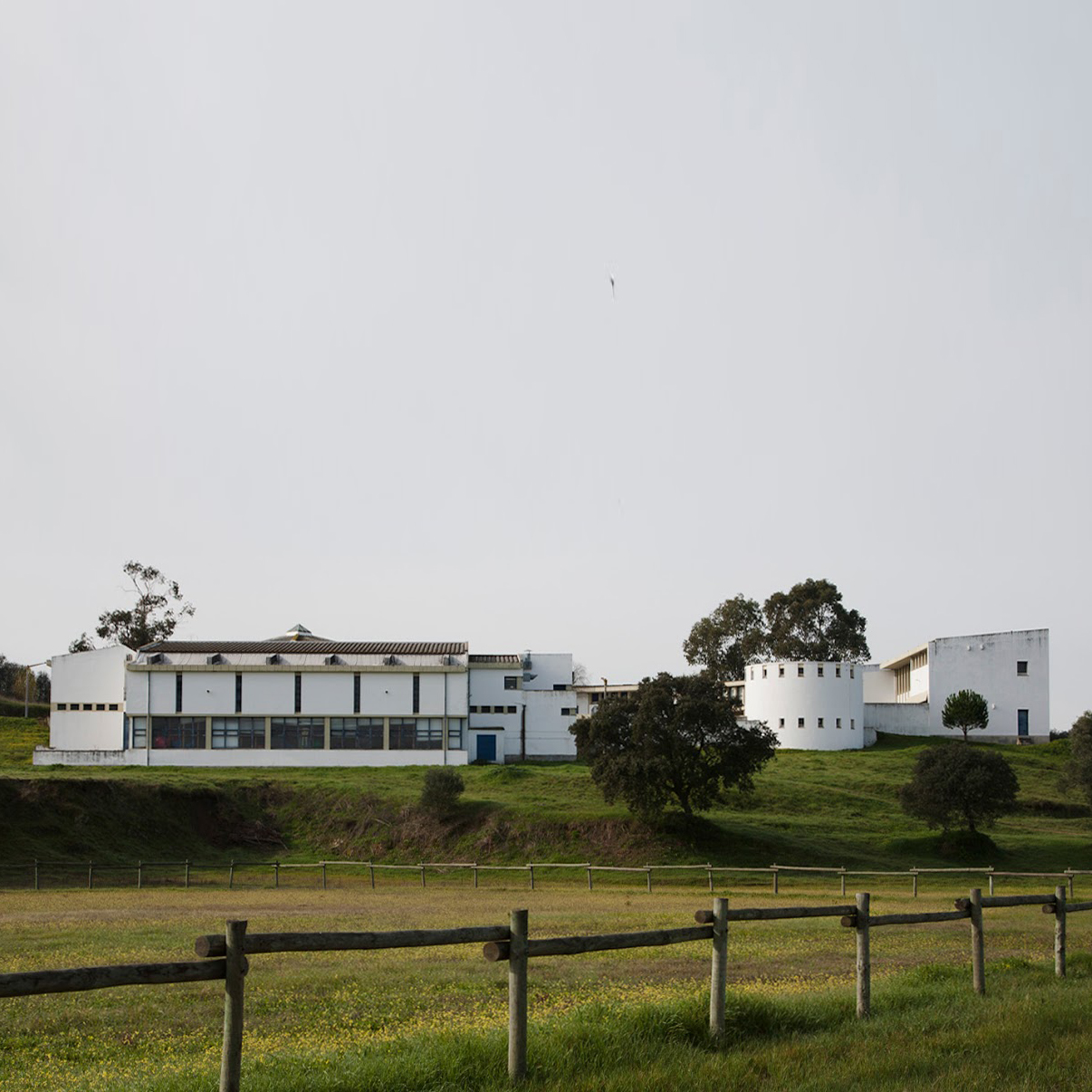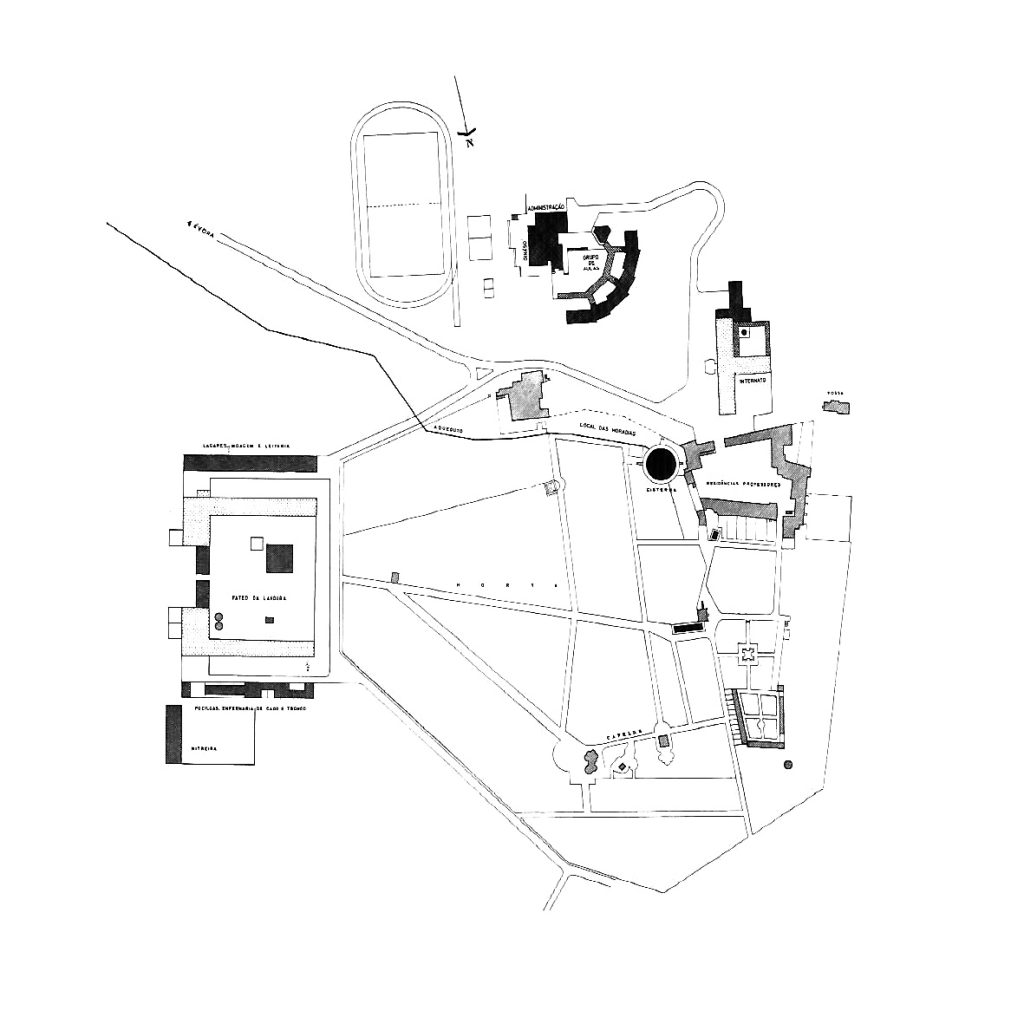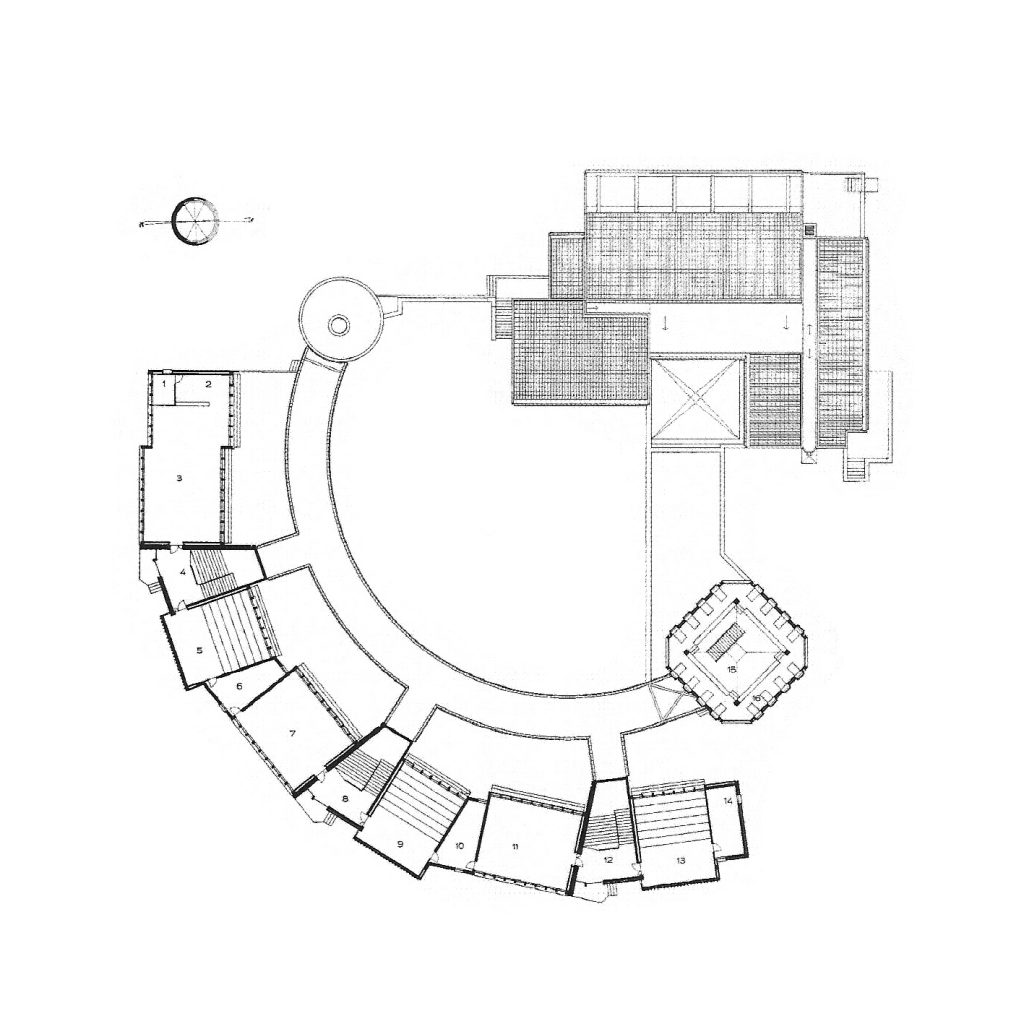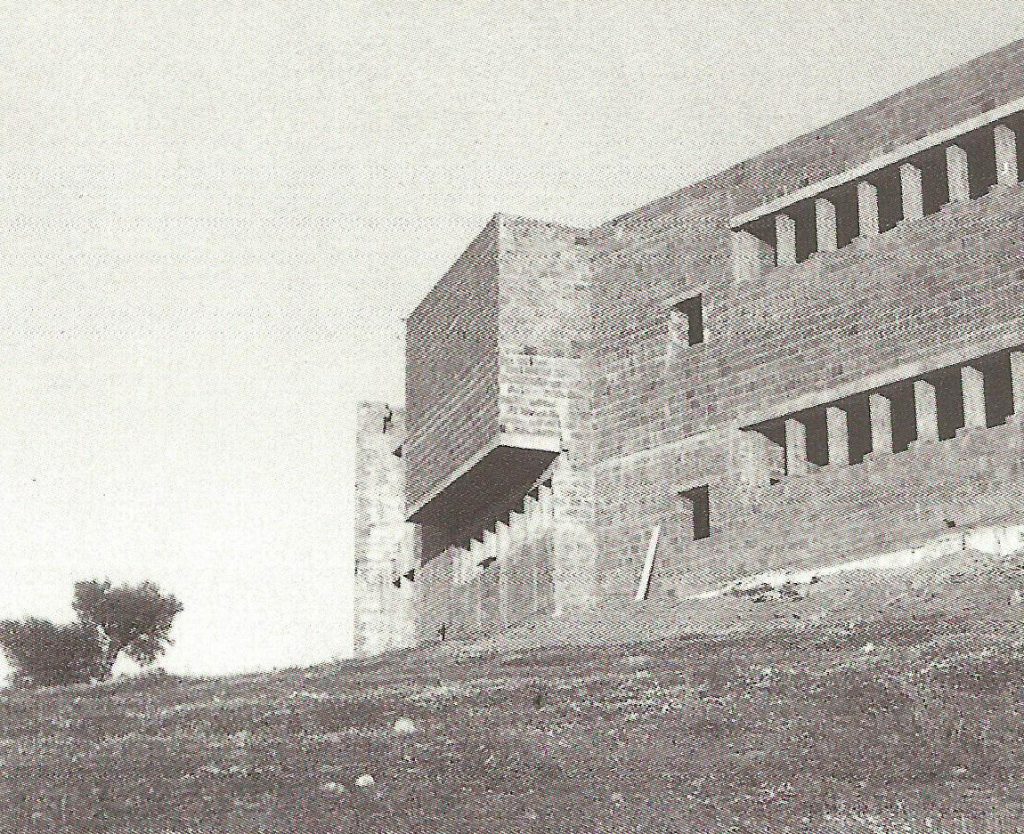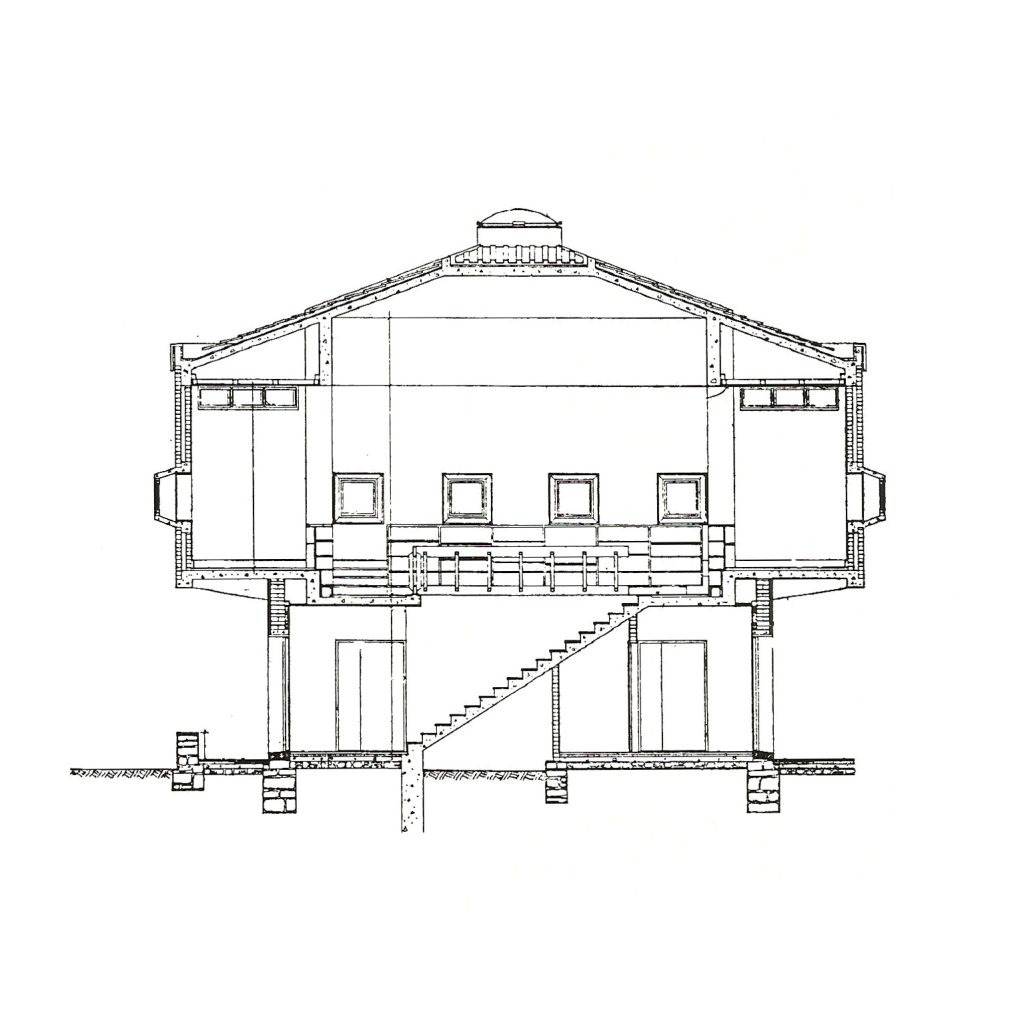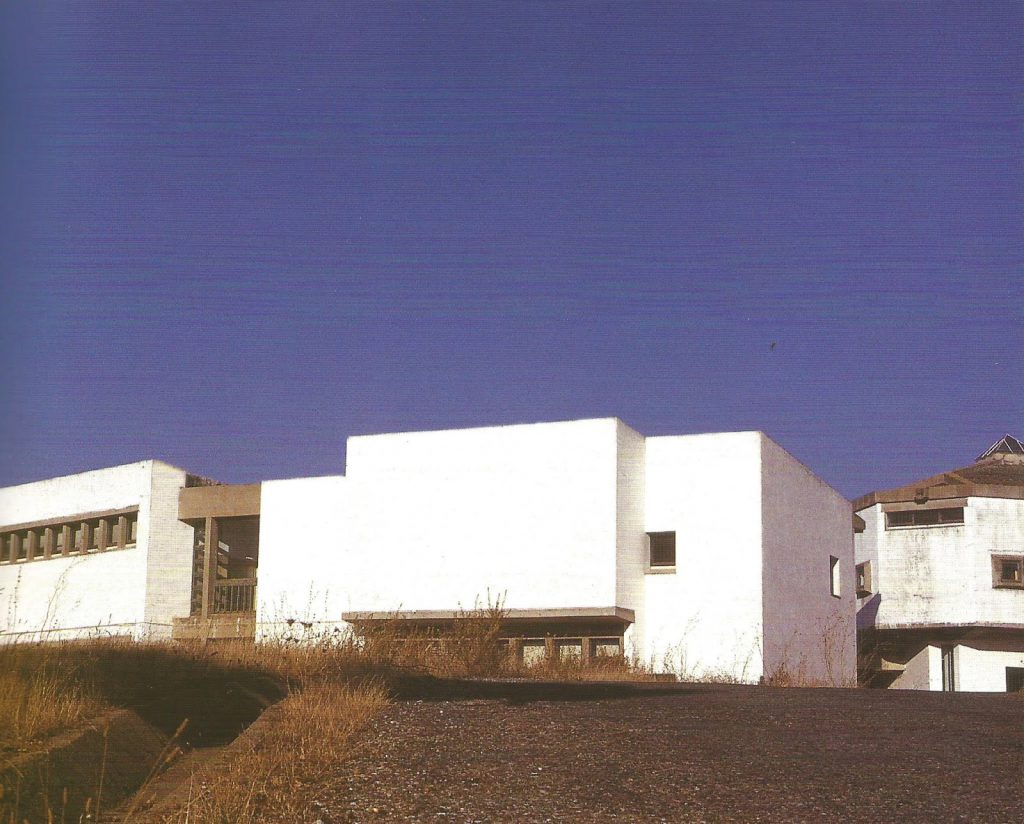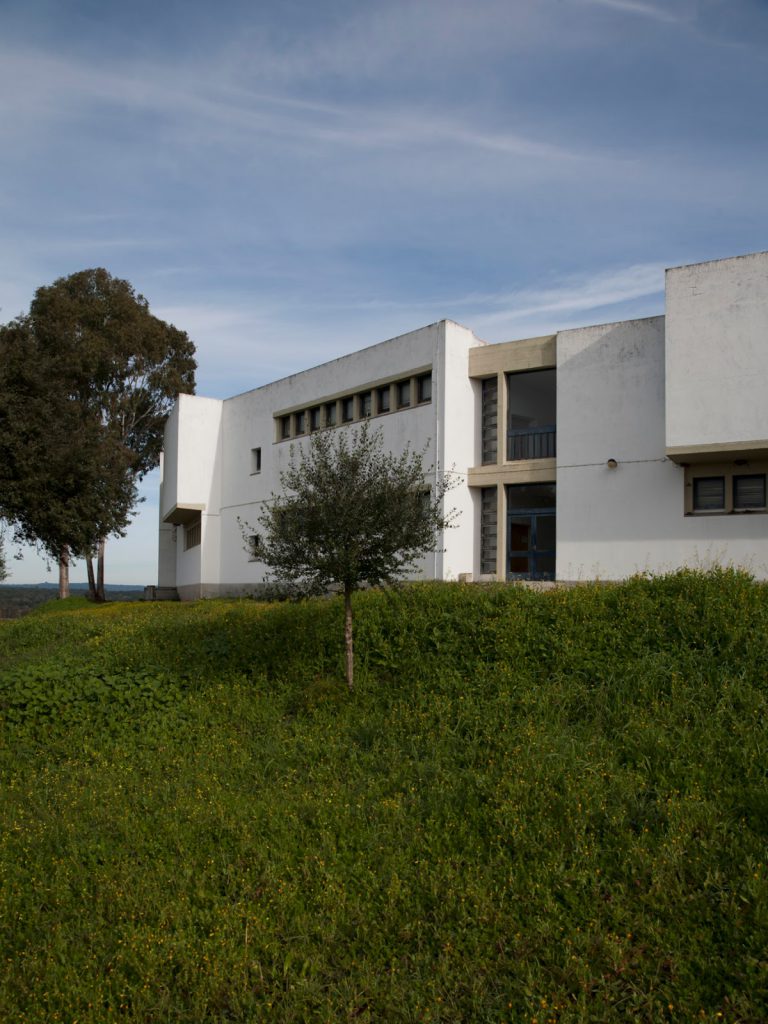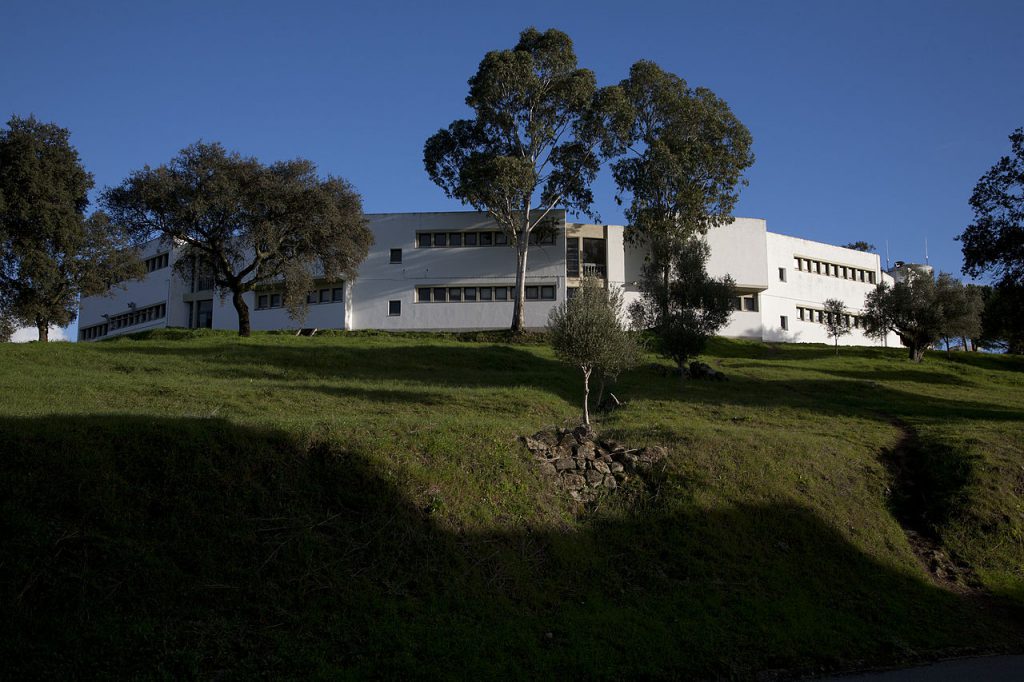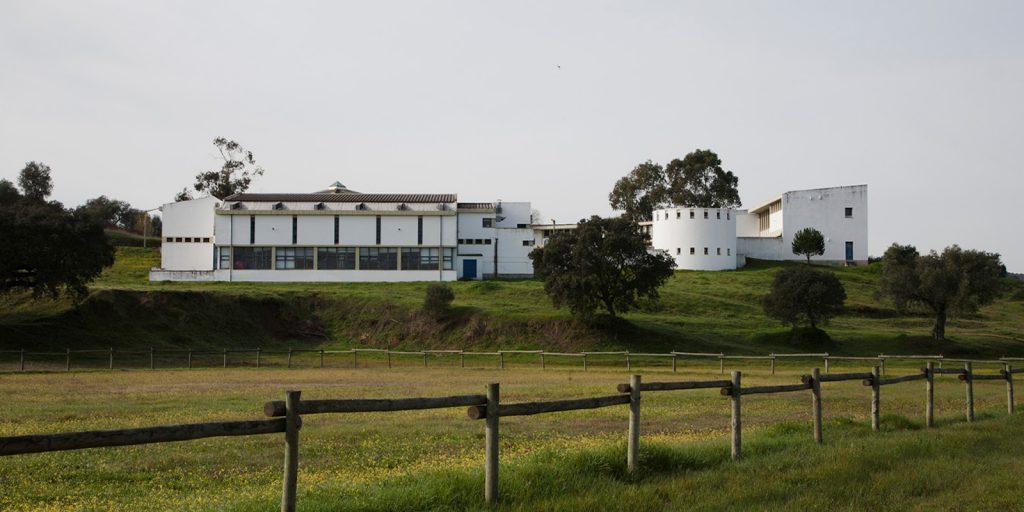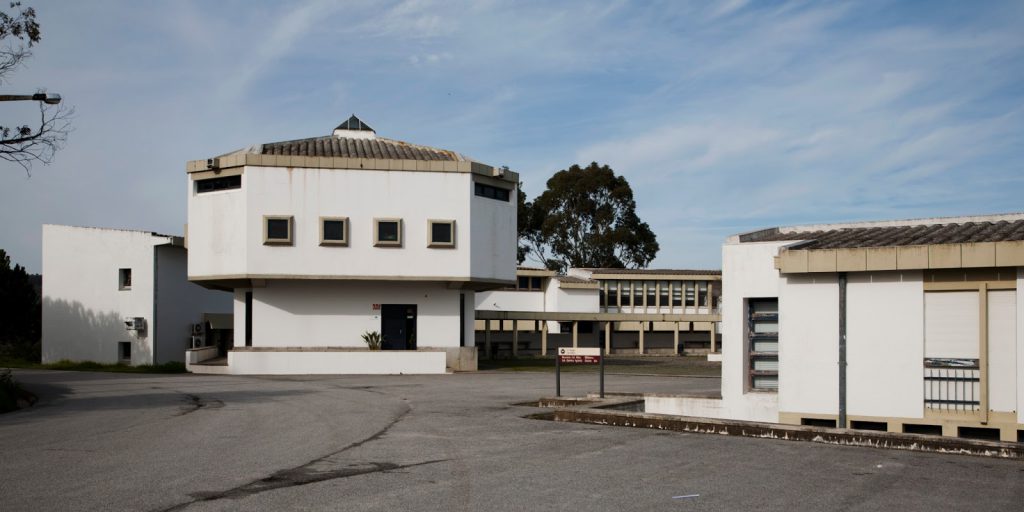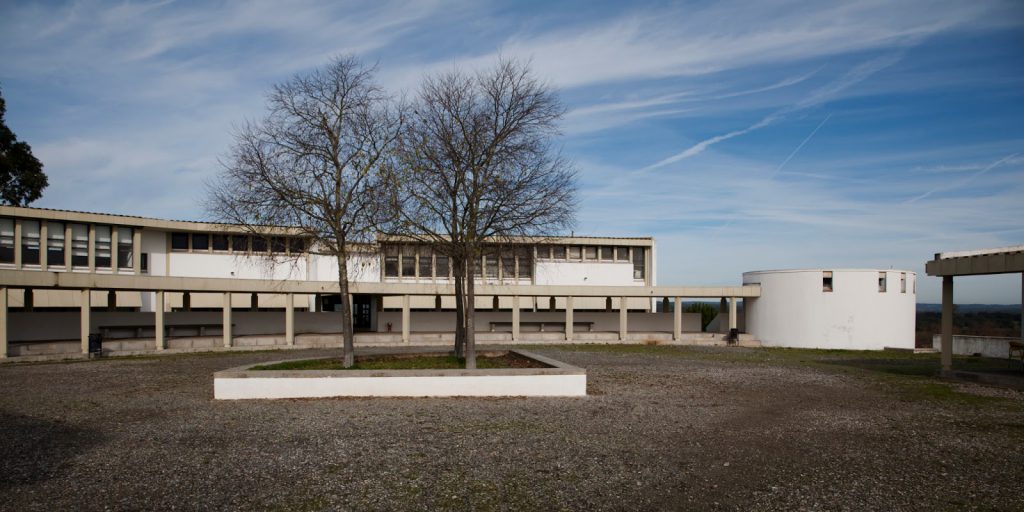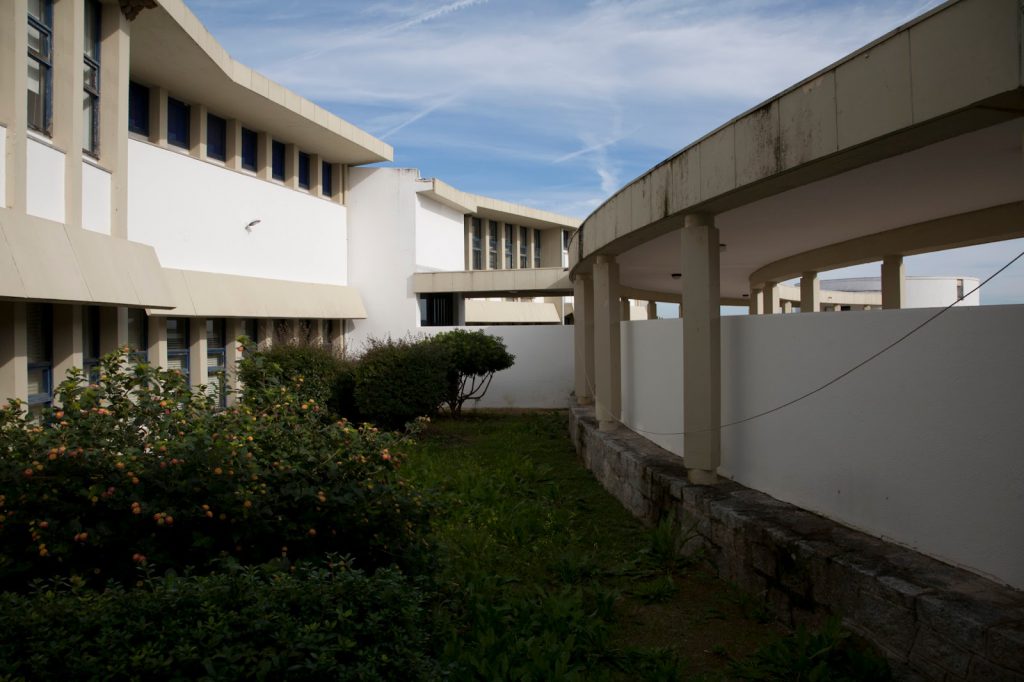How to speak of the Évora School at this distance?
Its history would always be an imaginary construction as memory has no words and operates only in fragments. All of a sudden, without even noticing it we can find ourselves in the realm of fiction. And sometimes memories fade away at the moment they are evoked. Remembering is therefore a fine and delicate game where all is either won or lost.
But the forms are there; settled contents that have no other means of expression except through metaphors of stone, brick and reinforced concrete.
No project is complete if it does not include a pinch of solidarity with the place. This is to say, for me, understanding the essence of Herdade da Mitra was not just an intellectual process; it was also affective and emotional: a feeling always expresses a structured and stable relationship with reality. Man is more human when he feels than when he thinks. A line, a figure, a sound, a shadow or flash of light have the power to avoke a thousand events both experienced and dreamed. They all are present in the act of designing.
¿Cómo hablar de la escuela Évora a esta distancia?
Su historia siempre sería una construcción imaginaria, ya que la memoria no tiene palabras y opera solo en fragmentos. De repente, sin darnos cuenta, podemos encontrarnos en el mundo de la ficción. Y a veces los recuerdos se desvanecen en el momento en que son evocados. Recordar es, por lo tanto, un juego fino y delicado donde todo se gana o se pierde.
Pero las formas están ahí; Contenidos asentados que no tienen otros medios de expresión, excepto a través de metáforas de piedra, ladrillo y hormigón armado.
Ningún proyecto está completo si no incluye una pizca de solidaridad con el lugar. Es decir, para mí, entender la esencia de Herdade da Mitra no fue solo un proceso intelectual; también fue afectivo y emocional: un sentimiento siempre expresa una relación estructurada y estable con la realidad. El hombre es más humano cuando siente que cuando piensa. Una línea, una figura, un sonido, una sombra o un destello de luz tienen el poder de evocar mil eventos experimentados y soñados. Todos ellos están presentes en el acto de diseñar.
The classrooms, the residential accomodation and the administrative services, the three sectors of the Escola de Regentes Agrícolas, had always co-existed in a single building. This building, constructed in the 30’s according to the design of the architect Jorge Segurado, was a perfect example of modernist anthology.
For its location on the land, general form, structure, windows, layout and internal quality of the spaces, everything indicated that all the indoor teaching activities should be assembled there (classrooms and studies); it was clear to me that this was its innate destiny. The residential accommodation should be located on the neighbouring headland.
The school’s headmaster did not agree. I insisted. Nothing to be done. My insistance was twofold: firstly, the adaptation work would be cheaper (as confirmed as its conversion into residential accomodation was completed); secondly it was a question of preserving, at a minimun cost, the character of a building that with all the marks of the author’s “jeunesse” represented a dignified and sober evidence of his passage through the Alentejo. Today it is not a question of knowing whether what has been done is better or worse than the original, whether it serves its purpose in a better or worse way. In the long run, it is simply a question of having lost a solid example of the technological optimism of the 30’s whose urbanity replicated exactly that of Mitra and the works of hydraulic engineering from the 18th century also present on the property. The property and all the “qualities” deposited in it over centuries – Conventinho da Mitra, architectures of peace and heartfelt meditation, agricultural crops, orchards, etc… – belonged to the Bishop of Évora in his heyday.
Las aulas, el alojamiento residencial y los servicios administrativos, los tres sectores de la Escola de Regentes Agrícolas, siempre han coexistido en un solo edificio. Este edificio, construido en los años 30 según el diseño del arquitecto Jorge Segurado, fue un ejemplo perfecto de antología modernista.
Por su ubicación en el terreno, la forma general, la estructura, las ventanas, el diseño y la calidad interna de los espacios, todo indica que todas las actividades de enseñanza en interiores deben reunirse allí (aulas y estudios); Me quedó claro que este era su destino innato. El alojamiento residencial debe estar ubicado en el promontorio vecino.
El director de la escuela no estaba de acuerdo. Insistí. Nada que hacer. Mi insistencia fue doble: en primer lugar, el trabajo de adaptación sería más barato (según se confirmó cuando se completó su conversión a un alojamiento residencial); en segundo lugar, se trataba de preservar, a un coste mínimo, el carácter de un edificio que, con todas las marcas de “jeunesse” del autor, representaba una evidencia digna y sobria de su paso por el Alentejo. Hoy no se trata de saber si lo que se ha hecho es mejor o peor que el original, si cumple su propósito de una manera mejor o peor. A la larga, se trata simplemente de haber perdido un ejemplo sólido del optimismo tecnológico de los años 30 cuya urbanidad replicó exactamente la de Mitra y las obras de ingeniería hidráulica del siglo XVIII que también están presentes en la propiedad. La propiedad y todas las “cualidades” depositadas en ella durante siglos – Conventinho da Mitra, arquitecturas de paz y meditación sincera, cultivos agrícolas, huertos, etc … – pertenecieron al obispo de Évora en su época de apogeo.
“While I am Minister it will not be done!
I will explain.
In the first version, and with full acquiescence by the School, I had proposed the installation of a building for the medical sanitary support premises for the animals in the interior of the Farm Yard and in a central positition. All well and good. In my opinion it would be a jewel in rural architecture, on the poetic level of the architectural bagatelles that are scattered all over the property (chapels, places for the solitary meditation of moks, etc…)
And this is where the “While I am Minister it will not be done” comes in, the very words of the Minister for National Education at the time.
Why was that? Nobody could give me an answer. Until today. An aberration of power, the School Board backed down and left me alone and without sufficient strenght to challeng the stupidity of a minister. And “it” was not built.
“Mientras yo sea ministro no se hará!
Lo explicaré.
En la primera versión, y con el pleno consentimiento de la Escuela, propuse la instalación de un edificio para los locales de asistencia sanitaria para los animales en el interior del patio de la granja y en una posición central. Todo bien y bien. En mi opinión, sería una joya en la arquitectura rural, en el nivel poético de las bagatelas arquitectónicas que se encuentran dispersas por toda la propiedad (capillas, lugares para la meditación solitaria de moks, etc …)
Y aquí es donde el “Mientras soy ministro no se hará” entra, las mismas palabras del Ministro de Educación Nacional en ese momento.
¿Por qué fue eso? Nadie pudo darme una respuesta. Hasta hoy. Una aberración de poder, la Junta Escolar retrocedió y me dejó solo y sin la fuerza suficiente para desafiar la estupidez de un ministro. Y “eso” no fue construido.
